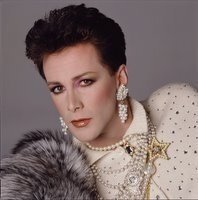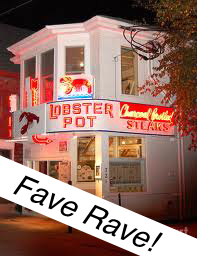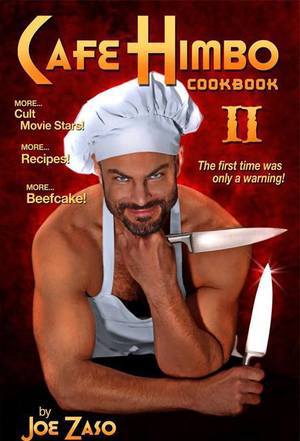A New Sybil's "WHO'Z DAT?"... OLIVER HARDY (January 18, 1892 – August 7, 1957)
/ Darlings! Mummy has made a decision! After reading dozens of posts and having hundreds of conversations with well-meaning folks who just don't know about the great CHARACTER actors who gave films the depth and genius that surrounded and supported the so-called "stars", I am going to post a regular, special entry called SYBIL'S "WHO'Z DAT??"....there'll be photos and a mini-bio, and the next time you see one of those familiar, fabulous faces that you just "can't quite place".......well, maybe these posts will help. Some of these actors worked more, had longer and broader careers, and ended up happier, more loved, and even wealthier than the "stars" that the public "worships"......I think there may be a metaphor in that! What do you think??? Interestingly, this particular face might be one that you can place fairly easily, because it’s so iconically linked to another face. But our subject today is Oliver Hardy (January 18, 1892 – August 7, 1957). Born Norvell Hardy in Harlem, Georgia, his father, Oliver, was a Confederate veteran who was wounded at the Battle of Antietam on September 17, 1862. After his demobilization as a recruiting officer for Company K, 16th Georgia Regiment, the elder Oliver Hardy assisted his father in running the vestiges of the family cotton plantation. He bought a share in a retail business and was elected full-time Tax Collector for Columbia County, Georgia. Norvell's mother Emily was descended from a long line of Virginians dating back to the 1600s. The family moved to Madison in 1891, before Norvell’s birth. His father died less than a year after his birth. Hardy was the youngest of five children. His older brother Sam Hardy died in a drowning accident in the Oconee River. Hardy pulled his brother from the river but was unable to resuscitate him. As a child, Hardy was considered sometimes difficult. He was sent to a Georgia military academy in Milledgeville as a youngster. Hardy had little interest in formal education, although he acquired an early interest in music and theater, possibly from traveling actor tenants that stayed in a boarding house that his mother owned. He joined a theatrical group, and later ran away from school near to sing with the group. His mother recognized his talent for singing, and sent him to Atlanta to study music and voice with singing teacher Adolf Dahm-Petersen. Hardy skipped some of his lessons to sing in the Alcazar Theater, a cinema, for $3.50 a week. He subsequently decided to go back to Milledgeville. Sometime prior to 1910, Hardy began styling himself "Oliver Norvell Hardy", adding the first name “Oliver” as a tribute to his father. When a movie theater opened in Hardy’s home town of Milledgeville, he became the projectionist, ticket taker, janitor and manager. He soon became obsessed with the new motion picture industry, and was convinced that he could do a better job than the actors he saw. A friend suggested that he move to Jacksonville, Florida, where some films were being made. In 1913, Hardy did that, working in Jacksonville as a cabaret and vaudeville singer at night, and at a desk job at the Lubin Manufacturing Company, a new film studio, during the day. At this time he met and married his first wife Madelyn Saloshin, a pianist for the theatre. The next year he made his first movie, OUTWITTING DAD (1914), for the Lubin studio. He was billed as O. N. Hardy. In his personal life, he was known as “Babe” Hardy, a nickname that he was given by his Italian barber who would apply talcum powder to Oliver’s cheeks and say, “nice-a-bab-y.” In many of his later films at Lubin, he was billed as “Babe Hardy.” Hardy was a big man at 6'1" tall and weighing up to 300 pounds. His size placed limitations on the roles he could play. He was most often cast as “the heavy” or the villain. He also frequently had roles in comedy shorts, his size complementing the character. By 1915, Hardy had made 50 short one-reeler films at Lubin. He later moved to New York and made films for the Pathé, Casino, and Edison Studios. After returning to Jacksonville, he made films for the Vim Comedy Company. That studio closed after Hardy discovered the owners were stealing from the payroll and continued on with the King Bee studio, which bought Vim. He worked with various early silent actors including Billy Ruge, Billy West (a Charlie Chaplin imitator), and comedic actress Ethel Burton Palmer during this time, still as the “heavy”. In 1917, Oliver Hardy moved to Los Angeles, working freelance for several Hollywood studios, and later appeared in the movie THE LUCKY DOG (1917) produced by G.M. (“Broncho Billy”) Anderson and starring a young British comedian named Stan Laurel. Oliver Hardy played the part of a robber, trying to stick up Stan’s character. They did not work together again for several years. Between 1918 and 1923, Hardy made more than 40 films for Vitagraph, mostly playing the “heavy” for Larry Semon. In 1919, he separated from his wife, ending with a divorce in 1920, allegedly due to Hardy’s infidelity. The next year on November 24, 1921, Hardy married again, to actress Myrtle Reeves. This marriage was also unhappy. Reeves was said to have become alcoholic.
In 1924, Hardy began working at Hal Roach Studios working with the “Our Gang” films and Charley Chase. In 1925, he starred as the Tin Man in THE WIZARD OF OZ. Also that year he was in the film, YES, YES NANETTE! (1926), starring Jimmy Finlayson and directed by Stan Laurel. (In later years Finlayson frequently was a supporting actor in the Laurel and Hardy film series.) He also continued playing supporting roles in films featuring Clyde Cooke and Bobby Ray.
In 1926, Hardy was scheduled to appear in GET ‘EM YOUNG (1926). He was unexpectedly hospitalized after being burned in a kitchen accident by by a hot leg of lamb. Laurel, who had been working as a gag man and director at Roach Studios, was recruited to fill in. Laurel continued to act and, later that year, appeared in the same movie as Hardy, 45 MINUTES FROM BROADWAY (1926), although they did not share any scenes together. In 1927, Laurel and Hardy began sharing screen time together in SLIPPING WIVES, DUCK SOUP (no relation to the 1933 Marx Brothers’ film of the same name) and WITH LOVE AND HISSES. Roach Studios’ supervising director Leo McCarey, realizing the audience reaction to the two, began intentionally teaming them together, leading to the start of a Laurel and Hardy series later that year. With this pairing, he created arguably the most famous double act in movie history. They began producing a huge body of short movies, including THE BATTLE OF THE CENTURY (1927) (with one of the largest pie fights ever filmed, UNACCUSTOMED AS WE ARE (1929), marking their transition to talkies, BRATS (1930) (with Stan and Ollie portraying themselves, as well as their own "sons," using oversized furniture sets for the ‘young’ Laurel and Hardy), ANOTHER FINE MESS (1930), and many others. They also had started making full feature films, including BABES IN TOYLAND (1934) one of their most memorable films, and THE MUSIC BOX (1932) a short which won them an Academy Award for Best Short Film — their only such award. In 1936, Hardy and Myrtle Reeves divorced. While waiting for a contractual issue between Laurel and Hal Roach to be resolved, Hardy made ZENOBIA with Harry Langdon. Eventually, however, new contracts were agreed upon and the team was loaned out to producer Boris Morros at General Service Studios to make THE FLYING DEUCES (1939). While on the lot, Hardy fell in love with Virginia Lucille Jones, a script girl, whom he married the next year. They enjoyed a happy marriage until his death. In 1939, Laurel and Hardy made A CHUMP AT OXFORD (1940) (which features a moment of role reversal, with Oliver becoming a subordinate to a temporarily concussed Stan) and SAPS AT SEA (1940) before leaving Roach Studios. They began performing for the USO, supporting the Allied troops during World War II. They teamed up to make films for 20th Century Fox and later Metro-Goldwyn-Mayer. Although they made more money at the bigger studios, they had very little artistic control; critics say that these films lack the very qualities that had made Laurel and Hardy worldwide names. Their last Fox feature was THE BULLFIGHTERS (1945), after which they declined to extend their contract with the studio.
In 1947, Laurel and Hardy went on a six-week tour of the United Kingdom. Initially unsure of how they would be received, they were mobbed wherever they went. The tour was lengthened to include engagements in Scandinavia, Belgium, France, as well as a Royal Command Performance for King George VI and Queen Elizabeth. In 1949, Hardy’s friend, John Wayne, asked him to play a supporting role in The Fighting Kentuckian. Hardy had previously worked with Wayne and John Ford in a charity production of the play WHAT PRICE GLORY? while Laurel began treatment for his diabetes a few years previously. Initially hesitant, Hardy accepted the role at the insistence of his comedy partner. Frank Capra later invited Hardy to play a cameo role in RIDING HIGH (1950) with Bing Crosby. During 1950–51, Laurel and Hardy made their final film. ATOLL K (also known as Utopia) was a simple concept; Laurel inherits an island, and the boys set out to sea, where they encounter a storm and discover a brand new island, rich in uranium, making them powerful and wealthy. However, it was produced by a consortium of European interests, with an international cast and crew that could not speak to each other. In addition, the script needed to be rewritten by Laurel to make it fit the comedy team’s style, and both suffered serious physical illness during the filming.
Biographer John McCabe said they continued to make live appearances in the United Kingdom and France for the next several years, until 1954, often using new sketches and material that Laurel had written for them. In 1955, the pair had contracted with Hal Roach, Jr., to produce a series of TV shows based on the Mother Goose fables. They were to be filmed in color for NBC. But, Laurel suffered a stroke and required a lengthy convalescence. Coincidentally, Hardy himself had a heart attack and stroke later that year, from which he never physically recovered.
During 1956, Hardy began looking after his health for the first time in his life. He lost more than 150 pounds in a few months, which completely changed his appearance. Letters written by Laurel refer to Hardy's having terminal cancer. Some readers have thought this was the real reason for Hardy’s rapid weight loss. Both men were heavy smokers. Hal Roach said they were a couple of "freight train smoke stacks".
Hardy suffered a major stroke on September 14, 1956, which left him confined to bed and unable to speak for several months. He remained at home, in the care of his beloved Lucille. He suffered two more strokes in early August 1957, and slipped into a coma from which he never recovered. Oliver Hardy died from cerebral thrombosis on August 7, 1957, at the age of 65. His remains are located in the Masonic Garden of Valhalla Memorial Park Cemetery in North Hollywood.
Stan Laurel was too ill to go to the funeral of his friend and film partner. He stated, "Babe would understand." People who knew Laurel said he was devastated by Hardy's death and never fully recovered from it. He refused to perform on stage, or act in another film ever again without his good friend. Stan Laurel died in 1965.
[Want to read other fun and funny stories here on SybilSez.com? Just enter any topic that pops into your head in the "search" window on the upper right! Who knows what might come up?...and feel free to share them with your friends!]









